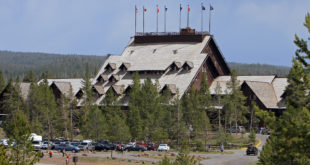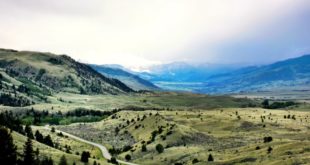As the spring moves into the higher altitudes, crawling up the Yellowstone River valley from Livingston and the Paradise Valley and on through Gardiner into Yellowstone National Park, the waters of the park break free of ice and snow. The trout are responding to the warming water, moving more, changing their feeding patterns to surface flies as well as underwater prey such as scuds (freshwater krill) and nymphs. Fly fisherman have been in the lower rivers of the Greater Yellowstone Region since the end of March – although often enough this year have had to face late season snowstorms and unusual cold. If this weather pattern holds, rivers and streams will run high right through June and well into July.
Fishing season in Yellowstone National Park begins the Memorial Day weekend, Saturday May 22, although Yellowstone Lake opens June 15 and some streams not until July 15. Park fishing licenses are required for anyone 16 or older (3 day -$15, 7 day – $20, season – $35). It’s also time to sharpen up those required barbless hooks – for those who remember fishing in Yellowstone about a decade or more ago, things have changed. Almost all the park waters are now catch and release. It helps to remember that the fish you catch today needs to survive being caught several times during the course of the summer. This is especially true on popular streams such as the Firehole River, Madison River, and Slough Creek.
One big exception to the catch and release rule is lake trout in Yellowstone Lake. Lake trout (sometimes called Mackinaw Trout)are predatory non-native fish which were probably dumped into Yellowstone Lake around 1990. They now threaten to almost eliminate the native cutthroat trout. Yellowstone Lake was once one of the largest trout fisheries in the U.S., with millions of cutthroat providing food for bears, otters, ospreys and avid fishermen. Today, cutthroat are food mostly for the lake trout. Unfortunately, the lake trout prefer to live in deep water (30-60 feet down) and do not spawn in the streams and rivers, which makes them unavailable to animals and birds. The federal government has spent several million dollars to control the lake trout, but with limited success. Studies and experiments continue this year to find ways of permanently reducing the lake trout population. In the meantime, there is no limit to the catch for sport, in fact, it’s illegal to throw a live lake trout back in the water.
If you’re planning to fish in Yellowstone waters, pick up your license and a copy of the regulations at any park visitor center, ranger station, or General Store. With a super-abundance of lake, river, and stream fishing at many different altitudes, Yellowstone Park and the surrounding Greater Yellowstone Region is one of the most famous trout fishing areas in the United States.
 Yellowstone Insider Your Complete Guide to America's First National Park
Yellowstone Insider Your Complete Guide to America's First National Park





